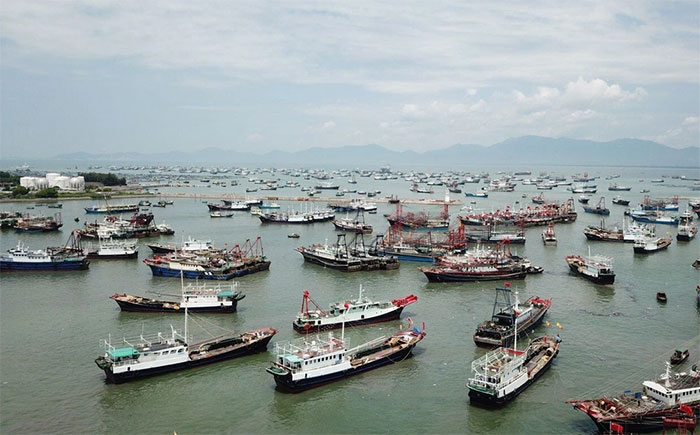China currently has the largest fishing fleet in the world, with the country’s fishing industry estimated to generate around $60.07 billion in 2020.
Chinese Vessels Catch 85% of Fish in the South China Sea
The fish resources in the South China Sea are at risk of depletion unless countries take decisive actions in the next 10 years to combat overfishing and the impacts of climate change, according to a study by scientists from the University of British Columbia and the ADM Capital Foundation.
The study also indicated that marine ecosystems are already in a state of decline in the nearby East China Sea, but there is still an opportunity for recovery, provided that immediate measures are taken to maintain sustainable fishing practices, such as using larger mesh nets and addressing climate change threats.

China has the largest fishing fleet in the world. (Photo: Xinhua).
“Sustainable fishing practices are crucial for ensuring that marine resources continue to nourish us,” said Rashid Sumaila, a professor of ocean economics and co-author of the report.
More than seven countries are actively engaged in fishing activities in the South China Sea with varying methods and policies. The lack of coordination among these countries will exacerbate the scarcity of fish resources.
Co-author of the report and Professor at the University of Hong Kong, Yvonne Sadovy, noted that the population of small fish used as feed for fish farms is also at risk of extinction.
According to one study, China accounts for approximately 62% of global seafood production. In 2016, half of China’s fishing vessels were involved in catching juvenile fish, accounting for about 85% of the catch in the South China Sea and 57% in the East China Sea in recent years.
More Valuable than Diamonds
The research from the University of British Columbia and the ADM Capital Foundation, published last week, simulated the impacts of climate change and overfishing behaviors by the year 2100. Both marine areas are estimated to generate an annual trade value of around $100 billion, making them two of the most important fishing regions in the western Pacific, while also providing livelihoods for millions of people.
In various climate change scenarios, the populations of shark species and popular fish like grouper and bass are expected to decline to a fraction of their current numbers by the end of the 21st century, or even face extinction, Sumaila stated.
Given the current climate change situation and fishing activities, commercially valuable fish species in the South China Sea could see their populations decrease by up to 90% by the end of this century, resulting in an estimated loss of about $11.5 billion in annual revenue by 2100.
Even in the best-case scenario, where greenhouse gas emissions are kept low and fishing activities are reduced by about 50%, the number of commercially valuable seafood resources in the South China Sea would still decline by 22%, equating to an annual revenue loss of approximately $6.7 billion by 2100.
Researchers also pointed out that reducing fishing activities in the first 10 years could significantly impact the long-term recovery of fish resources, recommending the promotion of regional dialogues to enhance cooperation in fish resource management among countries, reduce juvenile fish catch, and implement climate change policies in marine ecosystem management.
“Fish are more valuable than diamonds,” Sumaila remarked. “That’s because when you dig up a diamond, it is the only one. You cannot find another in the same place, but with fish, it is the opposite if done sustainably.”

















































